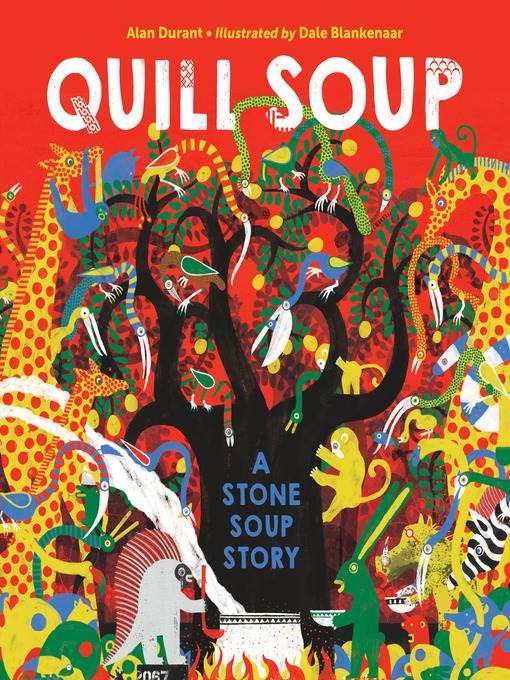
Quill Soup
A Stone Soup Story
فرمت کتاب
ebook
تاریخ انتشار
2020
Lexile Score
570
Reading Level
2-3
نویسنده
Dale Blankenaarناشر
Charlesbridgeشابک
9781632899231
کتاب های مرتبط
- اطلاعات
- نقد و بررسی
- دیدگاه کاربران
نقد و بررسی

August 1, 2020
PreS-Gr 2-Strongly reflective of the culture from which they are drawn, folktales are especially wonderful when authors and illustrators use fresh imagery to reimagine a well known story. Durant plants the elements of the story of stone soup in South Africa, where the main character, a porcupine, travels toward home. On the way, he finds himself in an unfamiliar village and is hopeful that the inhabitants are friendly. Despite ample evidence in Blankenaar's color-saturated illustrations that the residents have plenty to eat, the porcupine is refused food. He decides that he will have to make quill soup and asks for a pot and some water. The illustrations in the book are a remarkable combination of flat folk art and striking modern imagery, full of details for onlookers to find. Children will enjoy locating all the different animals in the pages. VERDICT This is a lovely tale about rushing to judgement and generosity; an excellent addition to any folktale collection.-Debbie Tanner, S D Spady Montessori Elem., FL
Copyright 2020 School Library Journal, LLC Used with permission.

September 1, 2020
From South African, an animal retelling of the "Stone Soup" folktale. The stranger in this version is Noko, a porcupine. Having traveled without food "through the Valley of a Thousand Hills," he arrives in a village hungry. When the villagers refuse him food, he creates a "thick and rich" soup with nothing but hot water and three of his own quills--and, of course, all the other ingredients that the villagers contribute. Impressed by Noko's claim to have fed this soup to the king, they fork over carrots, mealies, beans, spinach, and more. The king, not present but imagined, is a lion; the villagers are Meerkat, Warthog, Rabbit, and bunches of others. The setting, called a village, is both bustling and ambiguous--an amalgam of village, forest, and jungle. The scenes are intensely crowded and bursting with energy; both animals and backgrounds are styled in two dimensions, so everything overlaps on one plane. These animals aren't living in a specific static location so much as a world of bright red, yellow, blue, green, black, and white shapes and patterns. Occasionally an element seems industrial, such as small rounded rooms connected by ladders and tunnels that evoke factory pipes, but it's not definite. Flap copy says that illustrator Blankenaar took inspiration from African sources ranging from broad to specific: "Tanzanian artwork, the wood sculpture of Western Africa, and the costumes and masks of the Bwa people of Burkina Faso." Visually dynamic. (Picture book. 3-7)
COPYRIGHT(2020) Kirkus Reviews, ALL RIGHTS RESERVED.

October 12, 2020
Durant’s appealing twist on “Stone Soup” follows the adventures of Noko, a porcupine, who comes to a village after “traveling through the Valley of a Thousand Hills.” Upon arrival, he is delighted—at last, somewhere to rest, and something to eat. The suspicious local animals hide and refuse to give him food, but Noko’s “brain was as sharp as the quills on his back.” When he starts to cook a quill soup and claims that it is beloved by the king, the other animals, impressed, join in—Meerkat finds “mealies” and Pangolin adds worms—to make it just the way His Majesty likes it, and soon enough, there is soup enough for all to share. The book’s greatest appeal is Blankenaar’s vibrant, layered illustrations, which use stylized, blocky shapes and bold shades of red, blue, yellow, green, and black to conjure the bustling biodiversity of South African wild places. Ages 3–7.

























دیدگاه کاربران